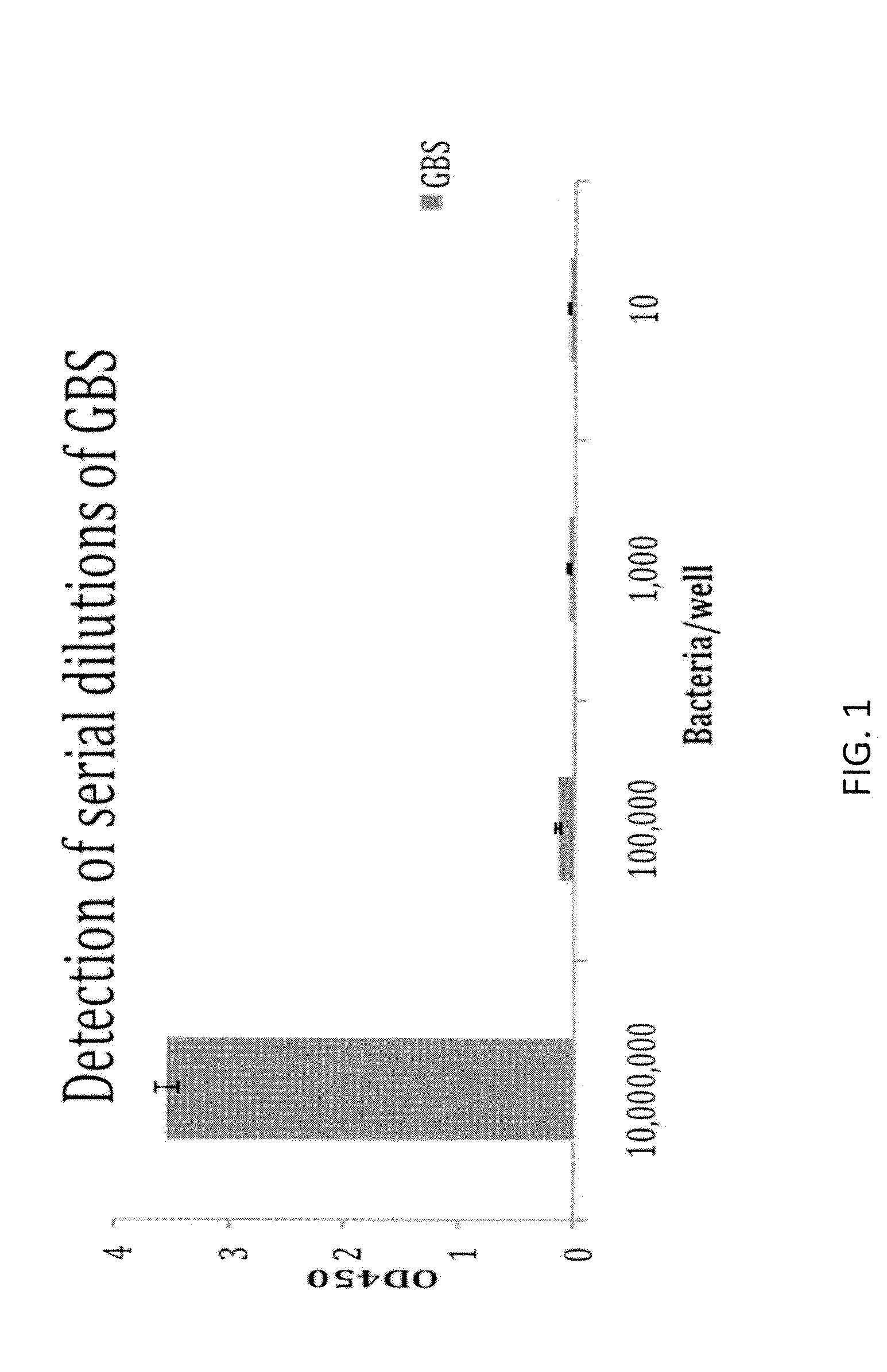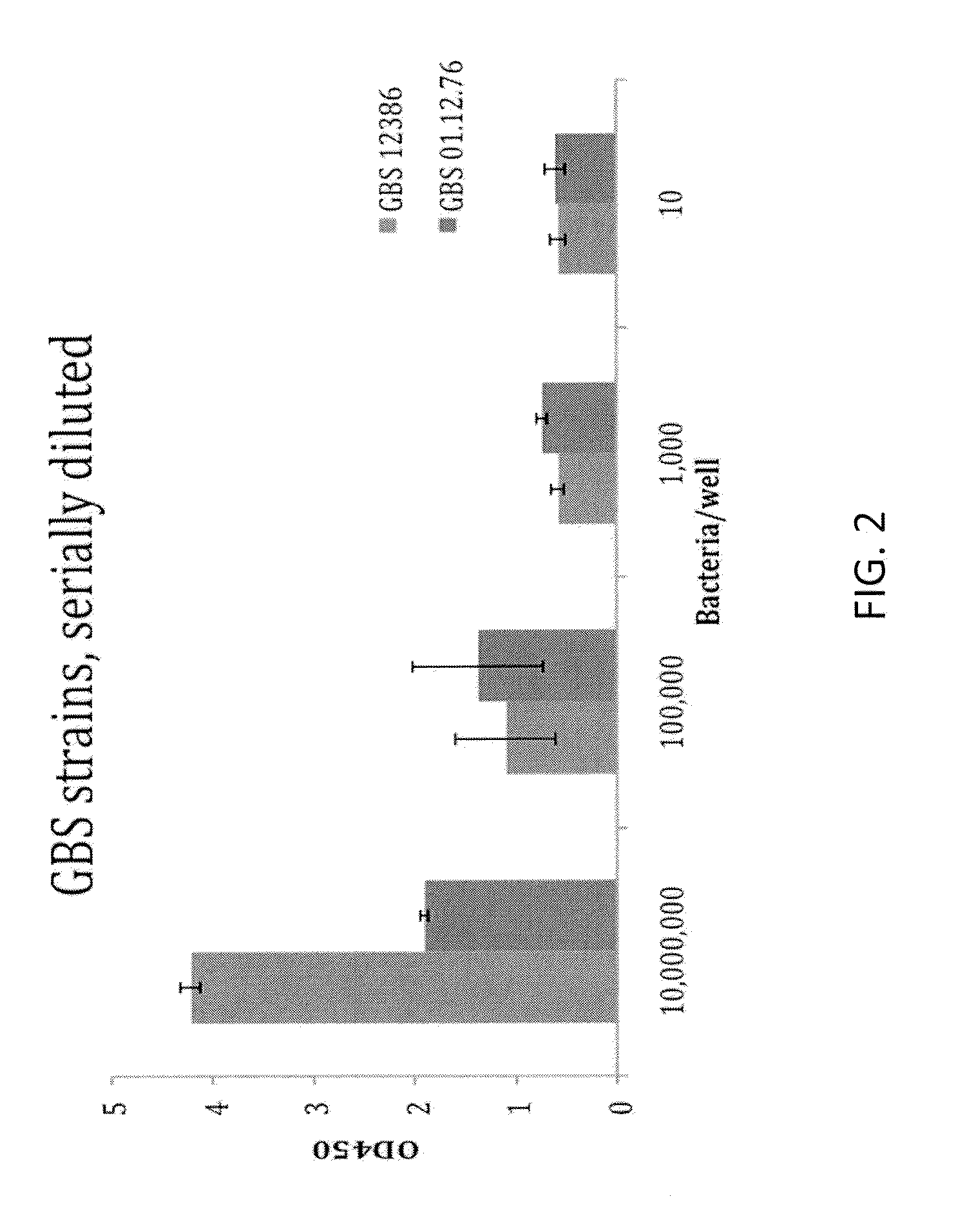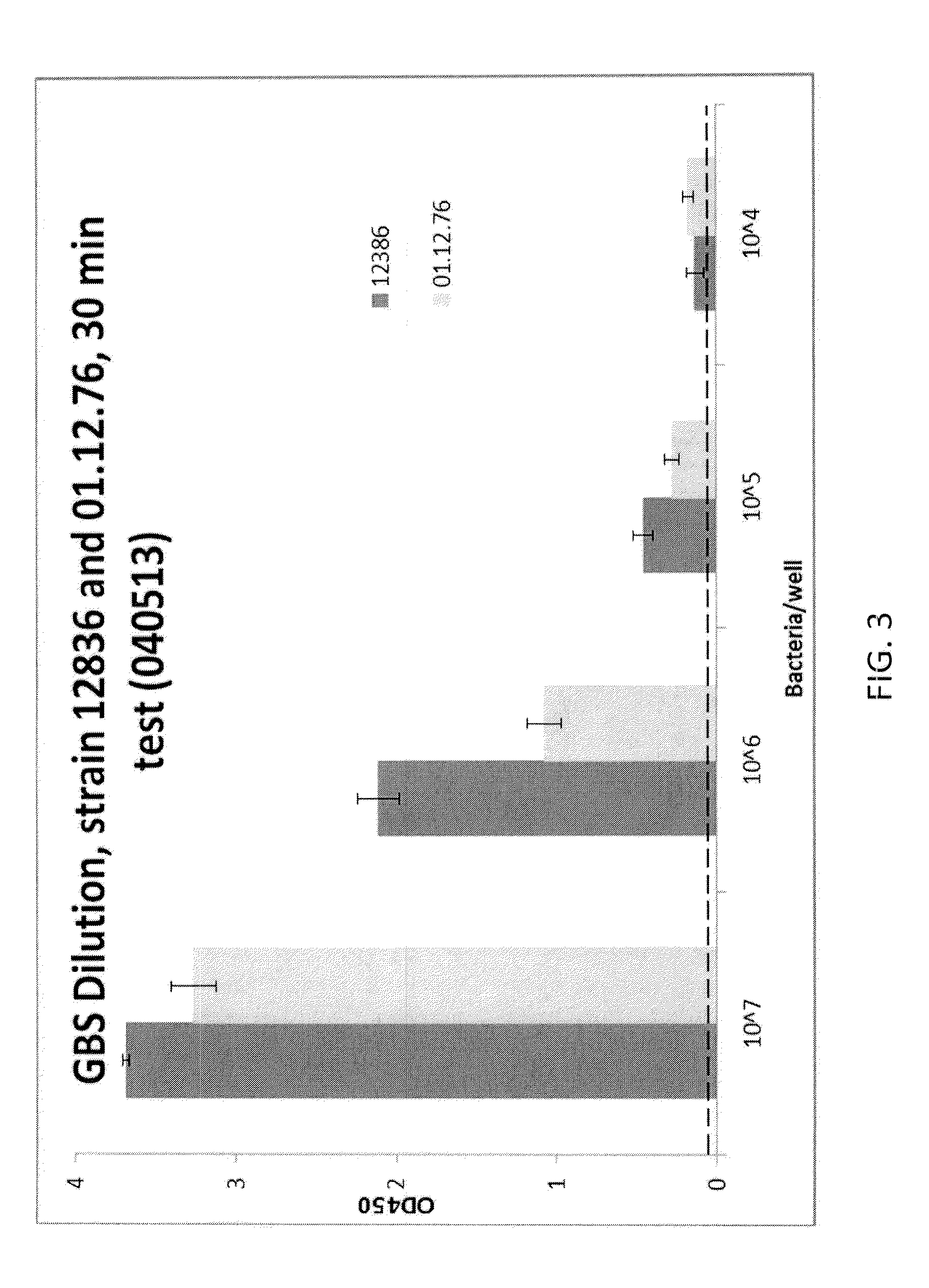Rapid Enzyme-Linked Immunosorbant Assay for Detection and Identification of Pathogens and Determination of Antimicrobial Susceptibility
a technology of enzyme-linked immunosorbent assay and detection method, which is applied in the field of microorganism detection and identification assay, can solve the problems of inability to obtain additional resources and training, and inability to detect clinically relevant pathogens. , to achieve the effect of high sensitivity and specificity, and determination of antimicrobial susceptibility
- Summary
- Abstract
- Description
- Claims
- Application Information
AI Technical Summary
Benefits of technology
Problems solved by technology
Method used
Image
Examples
example 1
Detection of GBS
Methods
[0045]Two strains of GBS (GBS ATCC 12386 and patient isolates GBS 1.12.76) were cultured overnight on CNA agar. A 0.5 McFarland was prepared, and strains were diluted serially in phosphate-buffered saline (PBS) from 107 to 101. Microtiter wells were coated with 100 μl of a rabbit polyclonal antibody directed against GBS (Virostat 1521) at specified dilutions, and allowed to stand at 4 degrees Celsius overnight. Additional antibodies directed against GBS which are commercially available were purchased and examined for their binding to GBS. Each of the additional antibodies (Pierce monoclonal antibodies and Virostat monoclonal antibodies) was added to microtiter wells at specified dilutions, either alone or in the presence of the polyclonal anti-GBS antibody (Virostat 1521). Wells were then washed three times with PBS, and subsequently blocked with 200 μl of 5% milk or StartingBlock (Pierce) at room temperature for 30 minutes. Following blocking, wells were agai...
example 2
Simultaneous Identification of GBS and Determination of Antimicrobial Susceptibility
Methods
[0052]Two strains of GBS (GBS ATCC 12386 and patient isolates GBS 1.12.76) were cultured overnight on CNA agar. A 0.5 McFarland was prepared immediately before wells were to be inoculated, and strains were diluted serially in LIM broth from 107 to 102. Microtiter wells were coated with 100 μl of a 1:15 dilution of rabbit polyclonal antibody directed against GBS (Virostat 1521), and allowed to stand at 4 degrees Celsius overnight. Wells were then washed three times with PBS, and subsequently blocked with 200 μl StartingBlock (Pierce) at room temperature. Following blocking, wells were again washed three times with PBS. At this stage, the plates were either used immediately, or stored at 4 degrees Celsius for later use. Upon proceeding with the assay, 100 μl of the selected GBS dilutions were placed in individual wells, and shaken gently on a plate stirrer at room temperature for 15 minutes. Nex...
example 3
Detection of Neisseria Gonorrhea
Methods
[0055]N. gonorrhea was cultured overnight on gonococci (Gc) agar. A 0.5 McFarland was prepared immediately before wells were to be inoculated, and strains were diluted serially in fastidious broth (FB) from 108 to 102. Microtiter wells were coated with 100 μl of a rabbit polyclonal antibody directed against N. gonorrhea at two dilutions: 1:200 and 1:100, and allowed to stand at 4 degrees Celsius overnight. Wells then were washed three times with PBS, and subsequently blocked with 200 μl 5% milk at room temperature for 20 minutes. Following blocking, wells were again washed three times with PBS. At this stage, the plates were either used immediately, or stored at 4 degrees Celsius for later use. Upon proceeding with the assay, 100 μl of the selected N. gonorrhea dilutions were placed in individual wells, and shaken gently on a plate stirrer at room temperature for 15 minutes. Next, wells were washed three times with PBS, and 100 μl of an HRP-co...
PUM
 Login to View More
Login to View More Abstract
Description
Claims
Application Information
 Login to View More
Login to View More - R&D
- Intellectual Property
- Life Sciences
- Materials
- Tech Scout
- Unparalleled Data Quality
- Higher Quality Content
- 60% Fewer Hallucinations
Browse by: Latest US Patents, China's latest patents, Technical Efficacy Thesaurus, Application Domain, Technology Topic, Popular Technical Reports.
© 2025 PatSnap. All rights reserved.Legal|Privacy policy|Modern Slavery Act Transparency Statement|Sitemap|About US| Contact US: help@patsnap.com



